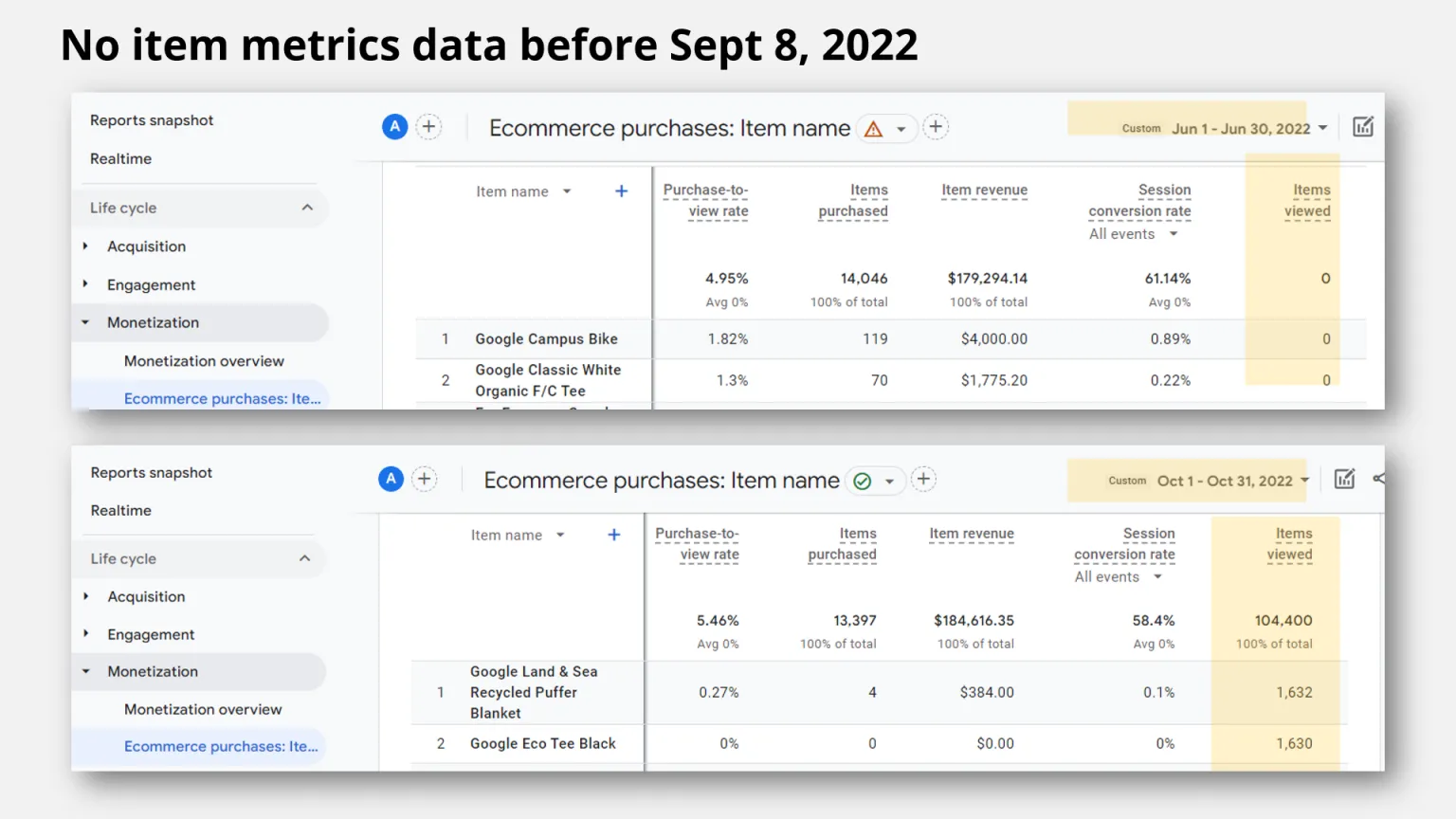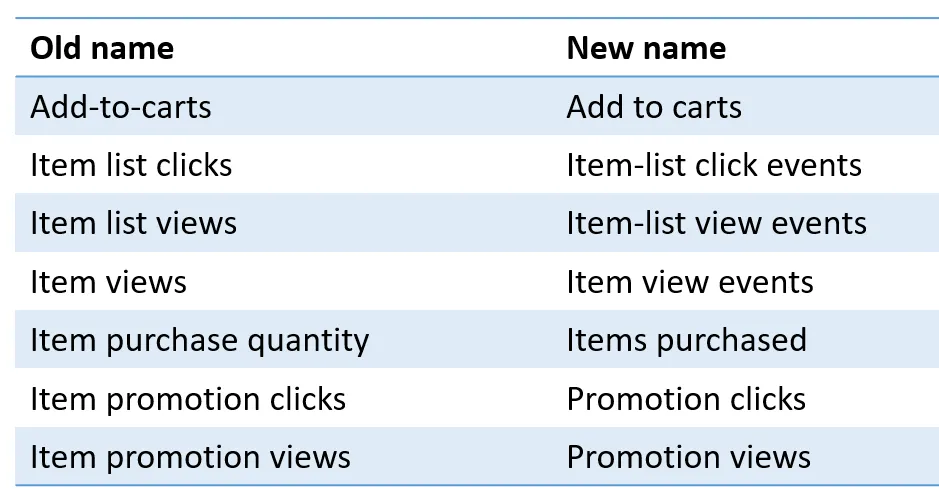What's Different about the New GA4 Ecommerce Item-Scoped and Event-Scoped Metrics and Dimensions

Google has introduced new dimensions and metrics to enable more granular analysis of ecommerce interactions.
If you’ve been unclear about what event-scoped and item-scoped mean, now’s the time to get clear about what scope is all about. If you don’t, you might be frustrated by Exploration reports showing no data.
Before we get to scope, here’s a quick summary of the GA4 new ecommerce dimensions and metrics.
There are 3 new dimensions:
- Item affiliation
- Item variant
- Shipping tier
Shipping tier is event-scoped and associated with an online shopping event, like a purchase event. The other two are item-scoped dimensions, which is clear by their description.
There are 2 new event-scoped metrics, associated with an online shopping event.
- Shipping amount
- Tax amount
And there are 7 new item-scoped metrics:
- Items added to cart
- Items checked out
- Items clicked in list
- Items clicked in promotion
- Items viewed
- Items viewed in list
- Items viewed in promotion
One thing to be aware of about these 7 item-scoped metrics.
Before September 8, 2022, data is inconsistent, likely zero. Be careful if you are analyzing ecommerce data before that date.
As you can see from this screenshot showing data from date ranges before and after Sept 8, “Items viewed” is zero before Sept 8. But given that the “Purchase-to-view rate” is not undefined, items must have been viewed.

This is data from the GA4 Demo account. Check out the data yourself. As you can see from the left side of the above images, these screenshots are from the GA4 built-in Reports section. If you don’t have access to the GA4 Demo account, read our post to learn how to easily get access to the GA4 Demo data.
Why do you need to understand scope?
If you try to create a report showing event-scoped metrics with item-scoped dimensions, you won’t have any data. You’ll see this message in Explorations …

Let’s say you want to know how many purchases there were for specific products.
These products are described by “Item Name” and “Item ID”.
You create an Exploration report and import metric “Purchases”.
What happens?
No data!
Why? Because “Purchases” is an event-scoped metric.
The correct metric is “Items purchased”, an item-scoped metric.
Let’s say you are interested further back in the funnel. How many times were these items added to cart?
You select “Add to carts”.
Argh!! No data! Once again, “Add to carts” is an event-scoped metric.
Use the item-scoped metric “Items added to cart”, and you’ll have data.
You might be thinking, I can’t remember which metric is item or event scoped!
The great thing about the recent renaming of metrics is that the item-scoped metrics and dimensions all appear to have “item” or in come cases “event” in them.
Here are 7 metrics Google has recently renamed:

What’s still confusing is that some event-scoped metrics have “item” in them. Such as “item-list click events” above.
The good news is that Google has this information in one place.
It’s all here in this Analytics Help article [GA4] Analytics dimensions and metrics. Scroll down and expand each section. The right most column currently makes it quite clear if the metric or dimension is event or item scoped.
We hope this gives you a clearer understanding of scope and how you can use the new ecommerce metrics and dimensions. Any thoughts about this? Drop us a comment.
